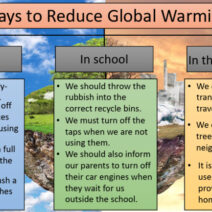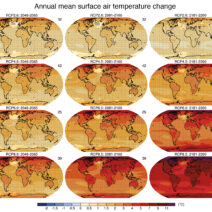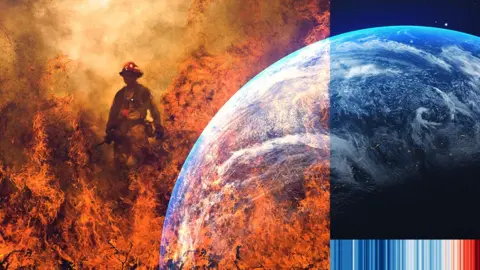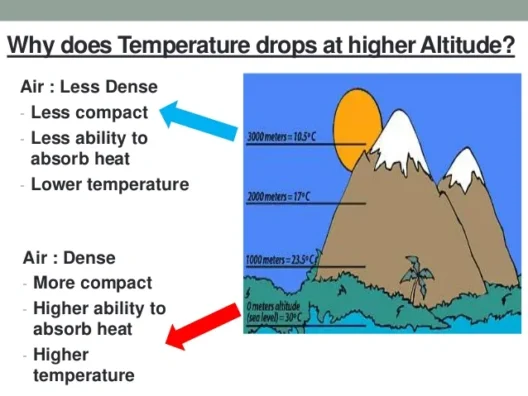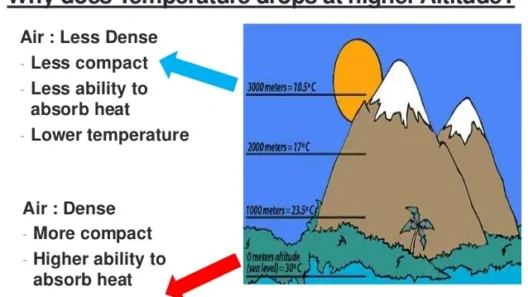The impact of climate change on the environment is a pervasive reality that manifests in myriad ways across the globe. From the melting ice caps of the Arctic to the coral bleaching in our oceans, the intricacies of these changes often elude immediate comprehension. Yet, the consequences are both profound and far-reaching, dictating the urgent need for awareness and action. It is essential to scrutinize these dynamics to unravel the full tapestry of climate change effects, enabling a deeper appreciation for the complexities of our ecological systems.
Firstly, one cannot overlook the accelerating rise in global temperatures. The average Earth temperature has surged over the past century, with the last few decades witnessing unprecedented warmth. This phenomenon is not merely a statistic; it leads to tangible consequences for natural ecosystems. For instance, notably higher temperatures exacerbate the phenomenon of biodiversity loss, as species struggle to adapt to rapidly changing habitats. The delicate balance of local ecosystems becomes increasingly precarious, resulting in local extinctions and diminished species resilience. Many species, particularly those with limited mobility or specialized habitat needs, find themselves on the precipice of extinction.
The repercussions of rising temperatures extend into our oceans as well. Warmer waters lead to significant changes in marine ecosystems, triggering a cascade of effects on aquatic life. One striking aspect is the phenomenon of coral bleaching, wherein corals expel the symbiotic algae that provide them with nourishment and coloration. This occurrence not only jeopardizes the survival of corals but also reverberates through marine food webs. Fish populations that rely on these reefs for shelter and sustenance face dire conditions, leading to reduced biodiversity and fishing yields. The cascading effects ripple through local economies reliant on fishing and tourism, highlighting the interconnectedness of environmental health and human livelihoods.
Additionally, the melting polar ice caps and glaciers present another pressing concern. As these ice masses diminish, they contribute to rising sea levels, which pose a significant threat to coastal communities worldwide. Estimates suggest that sea levels could rise by as much as three feet by the end of the century, inundating low-lying regions and displacing millions of people. This phenomenon does not solely threaten human habitats; it also disrupts natural ecosystems. Coastal wetlands, vital for biodiversity and water filtration, face the risk of submergence, leading to habitat loss for myriad species, including migratory birds and fish.
Furthermore, climate change instigates extreme weather events with alarming regularity. Hurricanes, droughts, and floods have become more frequent and intense due to the warming atmosphere. This amplification of natural disasters wreaks havoc not only through direct destruction but also by destabilizing local economies and displacing populations. For example, prolonged droughts can lead to food shortages, exacerbating existing inequalities and igniting conflicts over dwindling resources. The fallout is not confined solely to the immediate aftermath of a disaster; the long-term psychological and economic scars can be expected to linger for generations.
On a more subtle level, climate change also influences the intricate relationships among flora and fauna. Alterations in temperature and precipitation patterns lead to shifts in plant blooming cycles, which can misalign the seasonal availability of food sources for herbivores. This misalignment creates a ripple effect, ultimately affecting predator species that depend on herbivores for sustenance. Such disruptions illustrate the fragility of interdependent systems and the cascading consequences that can arise from even minor climatic shifts.
In urban settings, climate change poses unique challenges as well. The urban heat island effect exacerbates temperature rises, leading cities to experience higher temperatures than surrounding areas. This phenomenon places added strain on energy resources, as increased demand for air conditioning and cooling systems can overwhelm power grids. As infrastructure becomes increasingly strained, public health concerns, particularly related to heat-related illnesses and respiratory issues from degraded air quality, become paramount. The vulnerabilities of urban populations, particularly in marginalized communities, must be addressed through sustainable planning and infrastructure improvements.
Additionally, the socio-economic implications of climate change cannot be overstated. Disparities in resources exacerbate the challenges faced by low-income communities, who are often disproportionately affected by environmental degradation and climate impacts. Indigenous peoples, for instance, may face unique vulnerabilities due to their close ties to specific land and natural resources that climate change threatens to irrevocably alter. Addressing climate change demands not only environmental stewardship but also social equity, emphasizing the need for inclusive policy frameworks that prioritize the voices of impacted communities.
Moreover, addressing the burgeoning climate crisis requires fostering a culture of curiosity and engagement. Educational initiatives aimed at broadening public understanding of complex environmental issues, coupled with hands-on local actions, can galvanize communities towards resilience. By embracing a systemic approach, stakeholders can recognize interconnected problems and solutions, fostering interdisciplinary cooperation between scientists, policymakers, and citizens.
In conclusion, the impacts of climate change on the environment are far-reaching and intricate. From biodiversity loss and oceanic degradation to socio-economic disparities and urban vulnerabilities, the ramifications extend across ecological and human spectra. The imperative to confront these challenges is urgent, necessitating concerted efforts to mitigate further degradation and enhance adaptive capacity. As we reflect on the gravity of these changes, our collective responsibility is to implement sustainable practices and advocate for transformative policies that ensure a resilient future for all species on our planet.
